Why Are There So Many Worms in My Yard? (10 Likely Reasons)
-
Pete Ortiz
- Last updated:
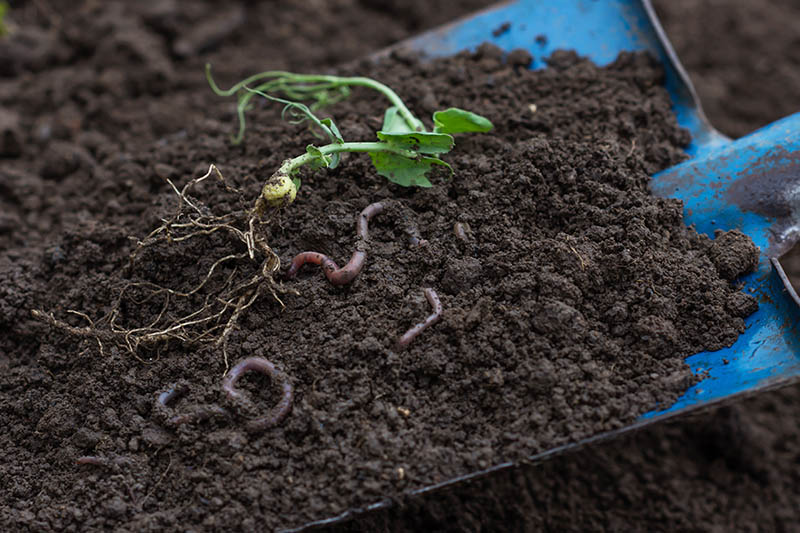
Having worms around the property is not necessarily a bad thing. They make the soil stronger, enrich it with nutrients, and help with drainage. However, worms aren’t always a welcome sight in the yard, especially if their “ranks” are growing exponentially. So, if you’re a bit worried about the infestation and are wondering—why there are so many worms in your backyard—we’re here to help solve the mystery!
First, we’ll cover the 10 most common reasons for that. Next, we’ll give quick, usable tips on how to reduce the worm population using tried-and-true maintenance tips. After that, we’ll talk about the biggest pros of having them in a garden or a lawn and the most widespread species in the States. Let’s get to it!
Worms: Just a Nuisance or a Big Problem?
Earthworms are a beneficial part of the ecosystem. But, if there are too many worms in the yard, that can be an issue. When their tunnels are too big, that makes the water flow faster than the plant roots can absorb it. Over time, you’ll start noticing slower growth, yellow leaf tips, and other problems. On top of that, these invertebrate creatures feast on live seeds.1
This happens rarely, but if you have a herd of cows that use a field of bluegrass, foxtails, or ryegrass as their main source of food, the poor growth and lack of vitamins and minerals will have a negative effect on their health. Worm castings are another headache. When left untreated, they end up burning the grass, leaving you with unappealing yellow spots all over the yard. Furthermore, the turf becomes uneven.
The 10 Reasons There Are So Many Worms in Your Yard
1. The Soil Is Rich in Nutrients
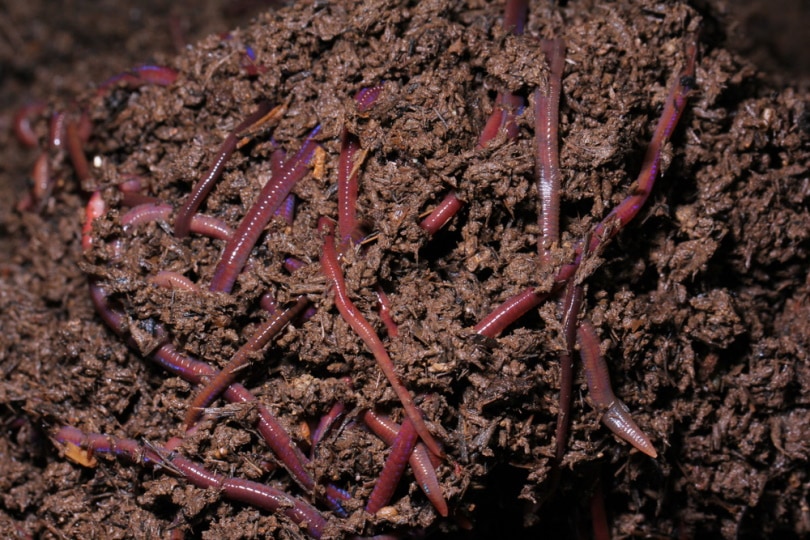
Worms spend most of their days and nights in the soil. If it’s moist, easy to chew through, and organically rich,2 it will be the perfect home for the creepy crawlies. And if you’ve got some decaying plants, dead roots, and animal dung in the area, that will make them even happier. So, how do you cut the “food supplies” for the worms? How do you make them leave (or lower their numbers)?
Well, unless you’re ready to burn the natural vegetation in the yard,3 including the lawn and the plants, your best bet is to physically remove the organic matter from the area. Yes, we’re talking about maintenance. Or there’s always the option of increasing the acidity levels in the soil. That’s the best way to scare the worms away without using lethal force. Let’s talk about that next.
2. The Acidity Levels Are Too Low
For earthworms, high acidity levels are a big turn-off. Ideally, they like it when the pH levels in the soil are above the average (7–7.5 or higher)4. By adding lime to the soil, gardeners lower acidity levels, making the environment more inviting. If you do the opposite (make the soil acidic), that will drive the worms away. Sulfuric acid, sulfur, and aluminum sulfate are the best materials for this.5
To put things into perspective: pH is short for the power of Hydrogen,6 and it goes from zero to 14. The lower the pH levels, the more acidic the soil is. In contrast, 14 means the soil is alkaline (sometimes called “base”). That leaves pH 7 as the neutral level. So, when we say that worms prefer it when the pH is higher, that means it should be more alkaline than acidic.
3. The Surface Is Always Moist
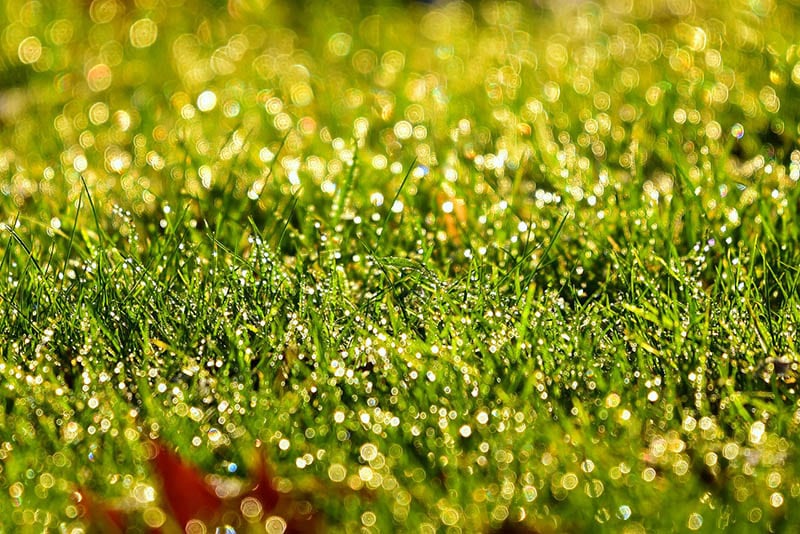
A hose is a great tool for watering a garden or lawn. But, if you “go an extra mile” and add a bit too much water to the surface, that will encourage the worms to leave the soil and crawl their way to the top. The same is true if you’re using an irrigation system with sprinklers. Worms can’t breathe when their skins aren’t moist. That’s why they are attracted to water.
The key here is to find the right balance between keeping the grass and plants watered and not provoking the tunnel diggers. But it’s always better to have some extra worms around the yard than to deal with withered and brittle grass or plants because of under-watering. So, start slow. Try to dial down your watering sessions a bit and see where that takes you.
4. It Rains All the Time
Worms aren’t picky when it comes to the water source. Therefore, if you live in a rainy area, worms “basking” on top of moist soil will be a very common scenario. How do you battle this? Well, fighting Mother Nature won’t do any good here. The best solution is to put a roof over your garden. That will be much harder to do for a lawn, of course.
A quick note: during the day, it’s perfectly normal for worms to lose up to 20% of their weight. Decomposing organic matter (leaves, stems, algae, and lawn clippings, to name a few) prevents the water in the soil from escaping. That’s why worms often find shelter in piles of decaying organic substances and stay there until the next time it rains.
5. You’re Mowing Too Low

When the lawn grass grows high, it hides any bug activity on the surface. In contrast, if you’re used to cutting it really low, that will instantly reveal the busy-at-work worms. So, while technically, you won’t be able to reduce their population by letting the turf grow longer, it will still have a strong visual effect.
6. The Yard Is Full of Grass Clippings
Worms are big fans of decayed organic stuff that’s easy to process, and grass clippings are a great example of that. Now, if the clippings are fresh—like maybe you cut the grass a day ago—the worms won’t be attracted to them immediately because fresh grass is hard to digest. In contrast, clippings that have been sitting in the same spot for weeks will turn into a delicious meal for these hard-working little creatures.
Therefore, if the goal is to persuade the worms to stay away from the surface, regular maintenance is your best bet. This is a humane yet highly effective solution. Don’t have anywhere to dump those clippings? Well, how about buying a compost bin and putting the waste there? If the bin is made of plastic and doesn’t have any holes, worms won’t be able to get in.
7. The Soil Is Covered With Leaves
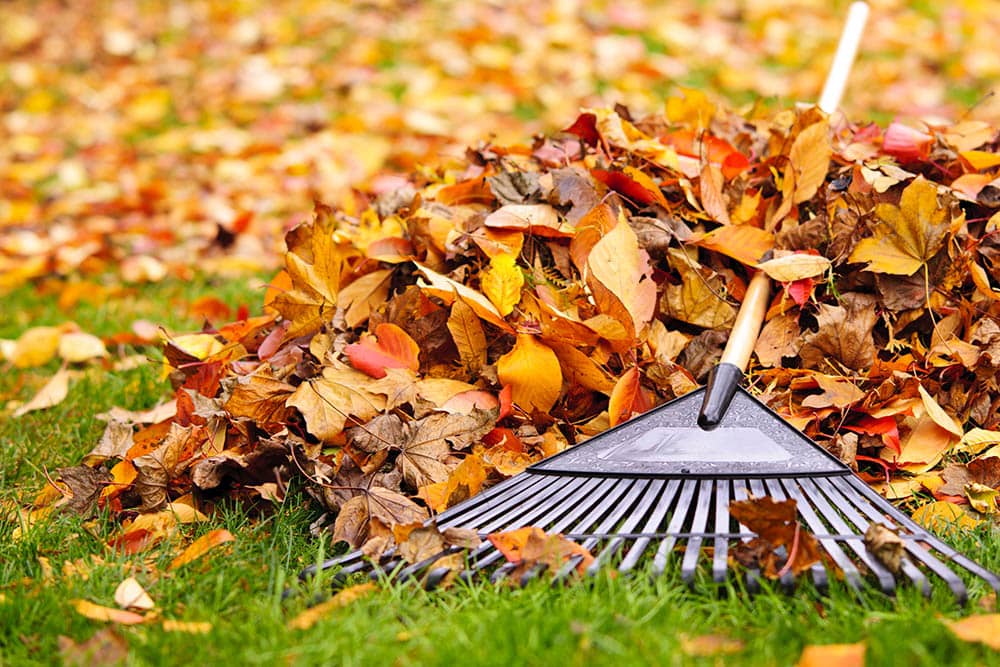
If unattended grass clippings are more of a spring/summer problem, in fall, you’ll have to take care of the leaves. The idea is the same: the more leaves you leave on the ground, the more reasons the worms in the yard will have to leave their warm underground tunnels and head for the surface.
They pick the leaves of deciduous trees and shrubs over evergreen leaves. So, if you have a large property, clean the leaves falling from deciduous plants first (yes, trees and shrubs are classified as woody plants). Otherwise, the worms will set up shop there while you’re busy with the evergreen leaves.
8. No Predator Species in the Yard
The list of worm predators is quite large, and by learning how to attract them to your property, you’ll be able to solve the problem. Mainly, we’re talking about birds. Robins and blackbirds are just some of the bird species that will gladly snack on worms. It doesn’t take long for these flying hunters to detect the crawlers on the surface. So, how do you encourage them to visit your yard?
You can do that by cultivating their favorite plants in large numbers. Yes, this will take some time, but it will be worth it. Then we have wasps, beetles, and even bats, but they might not be present in the area. The same goes for lizards, toads, and raccoons. These beasts mostly eat bugs and insects but won’t say no to an earthworm or two.
9. You Rarely Use Pesticides
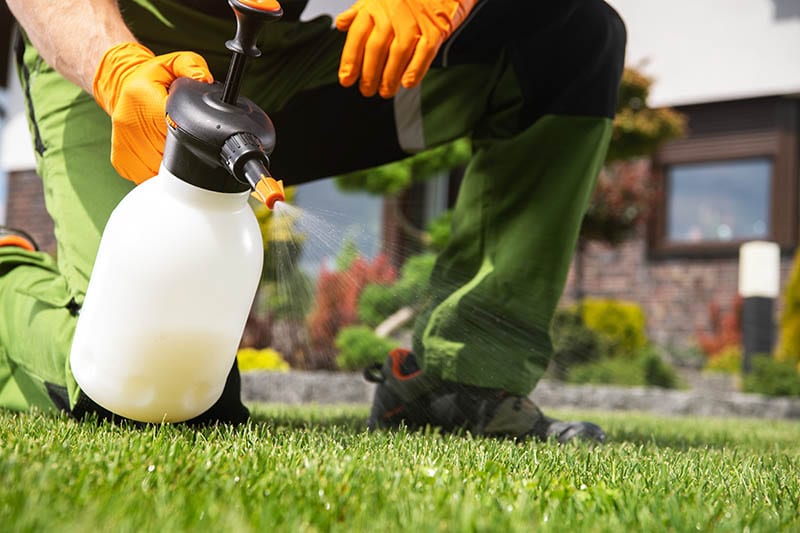
When the soil is pure—meaning not contaminated by dangerous chemicals—worms don’t feel like leaving it. That’s why gardeners who only use natural repellents against pests and critters often have a huge number of worms to deal with. Thankfully, there are lots of commercial products on the market that are specifically designed and formulated against worms.
If you use a pest control formula that claims to kill a wide range of destructive insects, that might also affect the nutrient balance in the soil. On top of that, certain chemicals attack beneficial bacteria as well. So, take a moment to find a mild repellent and see how it affects the worm population in the yard. Alternatively, you can use different fungicides or fertilizer products with high concentrations of ammonium sulfate.
10. The Worms Are Dead
Sometimes, you may see large numbers of worms just lying on the ground and think that they’re all alive. However, they’re probably already dead. The thing is—when worms come out of their hiding to enjoy the rain/high humidity levels, they don’t always make it back. Naturally intolerant to above-average temperatures, these creatures can’t handle scorching sun rays.
In other cases, they head out into the surface because the soil is too soggy for comfort. That’s right: over-watering is also an issue for worms. When it rains a lot, the water floods their tunnels, and they have nowhere to go back to! It’s hard for worms to navigate through the area on the pavement. So, when the sun comes up, their skins get dry, and the poor creatures die.
Common Earthworms in the Yard
There are literally thousands of different earthworm species. But, to make things easier, we can break them down into three major groups:
- First, we have the epigeic worms. They spend most of their time in leaves or grass. These worms aren’t the best choice for a garden as they’re relatively slow at consuming and “recycling” the soil. The same is true for the agricultural industry. The red worm is the most common species in this group, and it’s often used for composting.
- The endogeic worms, in turn, prefer to live in the soil. They don’t go very deep, though, and mostly stick to the topsoil (the upper 2–3 inches of the soil, just below the surface). Topsoil worms feast on decaying organic matter and dig horizontal tunnels. This group is quick to swallow big chunks of soil, mix it with digested crops, and turn it into castings.
- Lastly, there are the anecic species. Unlike the previous two groups, these worms create vertical tunnels/burrows that travel as deep as 5–6 inches. Crop residue—that’s what these creatures eat. We’re talking about leaves, pods, and stalks left in a harvested field. Subsoil worms consume the largest amounts of soil and crops.

The Pros of Having Worms Around
Earthworms aren’t the most favored creatures on the planet. However, despite some inconveniences, their presence can, indeed, help immensely. As natural tunnel diggers, they do a fantastic job of loosening stiff, compacted soil. That makes it possible for water and nutrients to flow freely. As a bonus, the soil’s holding capacity increases, allowing roots to feed on much-needed nourishments.
Next, any gardener will tell you that worms are a must-have for improving nutrient availability. By eating through most organic matter or waste, they turn it into the perfect source of vitamins and minerals for plants. Yes, worm castings are rich in nitrogen, phosphorus, potassium, calcium, iron, and other elements and serve as natural glue for soil particles.
The Earthworm Life Cycle
This might come as a surprise, but earthworms are hermaphrodites. They have two sex organs and can both produce sperm and eggs. That said, only a very small number of worms on the planet are self-fertile. The rest rely on each other for fertilization. Most earthworms live for 1–2 years, but can linger for up to eight years, depending on the species and environmental conditions.
Conclusion
In contrast to popular belief, worms are not pests. Instead, they are animals. And, while worms might not look pretty, when used competently, they will be of great help around the garden. These creatures keep the soil in top shape and aid in breaking down compost piles. That said, if you’re seeing a huge spike in worm numbers, that might be a bit alarming.
This is especially true when they start using the roots of your favorite plants as snacks! Thankfully, there are quite a few cheap and easy-to-use remedies against that. Proper maintenance, the use of pesticide products, and a little bit of acidity added to the soil will get the job done swiftly.
See Also:
- Com – Earthworms Essential Part of Organic Garden
- Org – Practices That Influence Organic Matter Amount
- Upenn.Edu – Diffusion Allows Worms To Breathe
- PSU.Edu – Why are Earthworms Important
- Cornell.Edu – The Influence of PH on Earthworms
- Gov – Earthworms With Pesticides
- CSS.Cornell.Edu – More About Worms
- OfWisconsin.Edu – Reducing Soil pH
- Com – What Animals Eat Worms?
- Com – What Is Organic Matter?
- Com – Powers of Hydrogen
Featured Image Credit: Jurga Jot, Shutterstock
Contents


